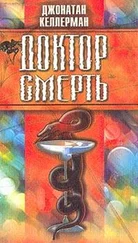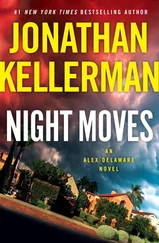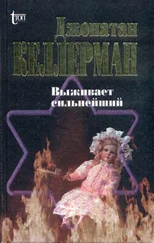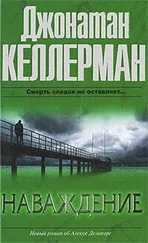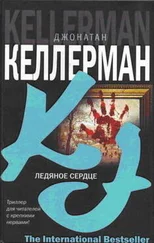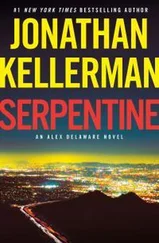As a kid I had a habit of reading a book’s last page first. I’m not sure where I picked it up. I think I tended to feel a story much too hard, the characters’ struggles becoming mine to an uncomfortable degree. Skipping ahead was my solution, a way to establish a critical space between them and me — enough to allow room for pleasure.
Once my brother saw me starting to do this with a book he’d recently finished. I can’t recall which. We’re fourteen months apart; our tastes often overlapped. Probably it was an athlete biography. We ate those up. Legends of Sports: Michael Jordan or whatever.
What I won’t forget is Luke’s reaction: he went berserk, ripping the book out of my hands and winging it over the rear fence into our neighbor’s yard; getting up in my face and screaming about cheating. I was confused. Cheating who? The author? Michael Jordan? Who cared? That’s my brother, though: righteous, sensitive, unfit to live in an unjust world. The way he saw it, he’d worked for that ending. I hadn’t.
What became of him, I suppose, was nauseatingly poetic, if not inevitable.
What became of us both.
After he’d stormed off, I went around the block and rang the bell to Mrs. Gilford’s house. She admitted me, watching with a perplexed smile as I went to her backyard and fished a flimsy paperback from the rosemary bush.
I was thinking about Luke distantly as I flipped ahead in search of an arrest report. I didn’t consider it cheating to start with information that bore on Tatiana’s safety.
Several hundred pages in, I found him.
His name was Triplett, Julian E.
On April 23, 1994, he was arrested and booked on one count of PC 187(a), murder.
At the time he resided at 955 Delaware St. #5, Berkeley, CA 94710.
He was a black male, with brown hair and brown eyes, born on July 9, 1978.
The next line made my blood lock up.
At fifteen years old, Julian Triplett stood six-four and weighed two hundred forty-seven pounds.
The man I’d chased was easily that size. Bigger, maybe. Twenty-plus years had elapsed — plenty of time for a growing boy, even a huge one, to grow more.
The arresting officer and lead investigator was named Ken Bascombe.
I paged back to his supplemental and began to read.
At four thirty-one on the morning of November 1, 1993, Bascombe was called to an apartment building on the 2500 block of Benvenue Avenue, just south of People’s Park. Upon arrival he found the street roped off at either end in anticipation of a mass of onlookers. Consulting with officers on the scene, he learned that the victim was Donna Zhao, a twenty-three-year-old Asian female, dead of apparent multiple stab wounds to the face, neck, and torso. She shared a third-floor two-bedroom unit with a pair of roommates, Li Hsieh and Wendy Tang. All three were undergraduates, enrolled at UC Berkeley.
It was the roommates who’d found her.
According to Wendy Tang’s statement, around nine thirty the previous evening, she and Li Hsieh had left the apartment together to go trick-or-treating. They’d tried to persuade Donna to accompany them, but she had declined, stating she was too tired and had too much work. Wendy Tang and Li Hsieh went out, spending the night hopping from one party to the next before coming home at approximately four in the morning.
Both women admitted to being intoxicated. For this reason, they did not at first realize that a crime had taken place, despite the disorder evident upon entering the apartment. Furniture was overturned, a lamp snapped in half. A trail of blood on the carpet led toward the adjacent kitchen, accessible through a pair of saloon doors, also bloodstained. Wendy Tang said, “We thought it was a joke.”
Entering the kitchen, they found Donna Zhao’s body heaped on the linoleum in a large pool of blood. Drawers had been pulled out. The toaster was in the sink. There were bloody handprints on the refrigerator door, as well as numerous streaks and smears, indicative of the victim fighting back. Spatter on the walls reached a height of eight feet, a few drops grazing the ceiling.
“Grossed out” but still unsure they weren’t being pranked, Wendy Tang called Donna’s name. Receiving no response, Tang shook her, then ran to dial 911 from the phone in her bedroom.
The first police arrived at 4:11 a.m., EMTs shortly thereafter.
At 4:24 a.m., Donna Zhao was pronounced dead.
According to Wendy Tang, nothing of value appeared to be missing from the apartment. She said that Donna did not have a boyfriend, or very many friends at all, speculating that Donna was self-conscious about being several years older than her classmates. Her Chinese given name was Dongmei. Studious and shy, she spoke a halting but grammatical English. Like Li Hsieh, she was a Beijing native; the two of them communicated with each other primarily in Mandarin. Tang, American born, had opted to room with them in order to improve her own Mandarin. She could not think of anyone who would want to harm Donna.
Canvass failed to produce a credible witness to a person or persons entering or exiting the building. BPD did receive an overwhelming number of tips about strange characters running around, covered in blood or wielding weapons. It was Halloween.
The early stages of the investigation had focused on People’s Park and its residents, a rotating cast of the mentally ill, the homeless, dealers, drifters, and social dissidents. In general, the cops took a hands-off approach, a policy born of the sixties. Then as now, you could stroll by and observe a multitude of freak flags flying.
That ethos swiftly went up in flames. A young woman, a student, alone in her apartment, doing her homework — butchered — the outcry was immediate and wild. A quirk of human nature is that we’re seldom afraid of the things that really might kill us. With the exception of Zaragoza, not too many folks have nightmares about cancer, heart disease, or diabetes. Stranger murders, rare as they are, are the epitome of randomness, and they stoke a disproportionate amount of terror. And terror’s first cousin: media coverage.
A sweep turned up a bloody steak knife, wrapped in an XXL hoodie, gray fabric dyed brown and red with blood. Both items had been stuffed into a plastic bag and dumped in a trash can on the corner of Dwight and Telegraph, blocks from the crime scene.
Photographed against a white surface, laid beside a ruler, the knife was a malignant thing, with a stocky black handle and a wide, serrated blade four and a half inches long.
Over the next forty-eight hours, the cops rolled the park up, hauling people in on charges rarely if ever filed in Berkeley — disorderly conduct, public nudity. The strategy was: net as many warm bodies as possible and hope that one of them turns out to be the bad guy. Naturally, the crackdown sparked a protest, which turned into a minor riot, leading to further arrests and head-cracking and outrage. Your basic PR toilet spiral.
Not until several weeks had passed did a plausible suspect emerge, and it wasn’t the product of any extraordinary detective work. A man walked into the police station and said he needed to speak to someone right away.
At approximately eleven thirty on the night of the murder, the man told police, he had been walking home from his lab when he noticed an individual loitering outside Donna Zhao’s building. He was able to offer a detailed physical description of the individual, including his clothing: basketball shorts, conspicuous in the chill, and a gray hooded sweatshirt that closely resembled the one recovered from the can.
Information about the sweatshirt had not yet been released to the public.
After some hesitation, the man went a step further, stating he could positively identify the individual. However, he declined to provide the individual’s name.
Читать дальше

